In an interview with The Climbing Cyclist the week after that race, Brendan spoke about the possibility of racing in the National Road Series (NRS) off the back of his Stratford to Dargo performance. Now, less than a year on, Brendan has just returned to Melbourne after a week spent racing with Drapac Professional Cycling at the Tour of Utah, alongside the likes of Cadel Evans, Chris Horner and Jens Voigt.
To say Brendan’s rise through the ranks has happened quickly would be an understatement. We caught up with Brendan to find out how his stagiaire (“trainee” or “intern”) position at Drapac came about, how he found the Tour of Utah and what might be next.
Before we talk about the Tour of Utah I wonder if we can pick up where we left off last time. How did you get involved with Search2retain and what’s your time with the team been like?
Once I won Stratford to Dargo I immediately had a few options with a few teams for the NRS contacting me. Straight away it was pretty full-on because I didn’t know too much about what the NRS was, what the different teams were about and who the different riders were. So making a decision to ride with Search2retain took a little while.
From there I went straight to Thailand for a training camp with the team for 10 days in December and they threw me into the last few races of the Victorian Road Series as well, including the Tour of Bright [ed. where Brendan came eighth overall in Open A grade]
So that gave me a little bit more experience before Nationals which was going to be my first official race with the team in early January. Basically the team has been trying to race me as much as they can because they know I don’t have too much experience and I’m pretty keen to get out there and race as much as I can, within reason.
How did the gig at Drapac come about?
To be completely honest I’m not entirely sure. I know I’m very fortunate that they approached me and Peter [Shandon] from Search2retain and indicated that they were keen to test me out in a race to see [how I would go] stepping up to the bigger stage.
I guess it would have come from my results at the Tour of Toowoomba when I finished third up the hilltop finish (see video below) a handful of seconds behind Jack Haig (Avanti) and same time as Joe Cooper (Avanti).
So when Drapac looked at those results and saw my name up there (and they know I haven’t been racing for too long) they saw a bit of potential in me and wanted to give me a shot to see how I’d go on a bigger stage.
What happened once Drapac made you an offer?
The offer was made within about 45 days of the Tour of Utah starting which, given the duration, the altitude and the level of the racing — and my limited experience — I had to actually go home and consider whether I should say yes.
And that’s when I spoke to Peter, my coach, my family and friends and it took me a weekend talking to those closest to me about whether it was a good idea. But when I weighed up all the positives with the negatives I thought it was too good an opportunity to say no.
Within the next week I was given a bike and the kit and we went off to the training camp in Healesville for 10 days which was a good chance for me to meet the teammates I was going to be racing with and meet a few of the other guys, like the team manager Jono [Breekvelt] and a couple of the DSes [sports directors] and the performance manager Keith [Flory] who was actually going to come to Utah with us.
Basically once the offer was there and I said yes, everything kicked into gear for preparing for Utah.
How did you find it coming into an established team and trying to fit in? Was everyone accommodating?
It’s always hard coming into something like that where they’ve been racing together for quite a while — they get to know each other quite well and they’ve got a lot of inside jokes. But they were extremely accommodating towards me and at the training camp they actually roomed me with Darren Lapthorne [former national champion]. He’s one of the more senior and experienced guys on the team; just rooming with him on the training camp was really great because he’s a super-nice guy but he also had a lot of things to tell me and I think we got along pretty well.
So that made the transition towards the team and camp much smoother. All the guys were really nice to me and completely supportive of my being there and they were looking out for me.
You headed over to Utah about a week before the race to recon some of the stages. What was your impression of Utah as a place? The photos and videos from the race looked stunning!
It’s pretty incredible. I didn’t know too much about what to expect but once we arrived at the airport you could tell straight away that it was a pretty incredible place. Just driving towards [Salt Lake City] you can see all the mountains in the background. They almost do a full 360 degrees around the town — everywhere you look you can see big mountains.
Much of Utah is quite a long way above sea level. How did you prepare for that?
As soon as I was given the opportunity for the race in Utah I went to my coach Stephen Lane who’s pretty knowledgeable with all that stuff and he hooked me up with an altitude machine and altitude tent at home before I went to the Healesville training camp. So I actually had about 10 days at home, sleeping at altitude before going to an altitude tent at Healesville.
I started off at just under 2,000m to see how it felt and gradually pushed it up. The highest I slept at was about 2,500m before heading over to Utah. So I had about 20 days of sleeping at altitude for acclimatisation before going to Utah. But even then sleeping in an altitude tent doesn’t really compare to living at altitude 24/7.
I think Salt Lake City and nearby areas are at about 1,600m above sea level and Park City sits just above 2,000m, but some of the climbs went up to 3,000m and that’s quite extreme.
What does racing at that sort of altitude feel like?
There are times in the race where you really start to feel it, but the good thing is that most of the peloton feels it too. Everyone’s suffering, but some people suffer less.
Quite a lot of the Bissell Development Team guys live in Park City so that’s obviously going to help them a lot because when they go up to 3,000m they’re still going to be suffering but they’re more used to it than we are.
There were points when I was sitting at 3,000m above sea level and barely pushing any power – and you can feel you’re suffering quite a lot in your cardiovascular system, so that was strange.
It’s hard to explain really. There weren’t many points where I could really go deep when we started going higher. That was probably due to the fact my legs were pretty fatigued just due to the duration of racing, but when we got to altitude I looked down at the power I was producing and it was nowhere near what I would have expected if I was back home at sea level.
What were you expecting going into the race?
Do be honest I wasn’t really sure. It was a bit unknown to me how I would go at that level because it was a big step up from the NRS — there were a lot of bigger riders there. My biggest stage race before going over there was 156km during Battle of the Border — six of the seven stages at the Tour of Utah were over 170km.
I wasn’t expecting to do well on GC overall, and that’s not what I was in the team to do. When Drapac signed me on for this race they had no expectations of me getting a stage result or doing well on GC — they just wanted to get me out there and see how I’d go in the bunch, get me to do a few things like help out the guys with bidons and ice bags, or move them up into position when they needed it.
You must have been happy with your performance — 50th overall from more than 120 starters, 37th on the hardest climb of the race, Powder Mountain?
I checked it out and compared it to Baw Baw. It’s roughly the same average gradient but it goes on for a few kilometres longer, and it goes up to about 2,700m which is just crazy. It was actually quite similar to [the Mt. Baw Baw Classic] because we had a Cat 2 climb coming into it, so that’s like Vespers Hill.
That was probably one of my better stages. Going over that Cat 2 climb was the one time where I felt like I could go hard and I got dropped by the main group over the Cat 2 but when I did there was only about 20 guys left. And when I saw that on TV on the replay I was like “Oh, I was actually up there when so many of the other guys had been dropped”.
And that was really good, but I was also slightly disappointed because if I had hung on for another kilometre or two I would have actually made it over the Cat 2 climb with the group and then been able to get a bit of a sit then help out my teammates Lachie [Norris] and Jai [Crawford] who were still in there, to get good position for Powder Mountain.
As it turned out Jai had to sacrifice himself a little bit to help Lachie move up at the base of the climb and that’s what ideally I would have been there to do so they could sit in on my wheel.
One on side of the coin I feel really really happy that I got through the Tour and survived. I finished 50th on GC out of 120 or so, so that sounds alright too and my aspirations weren’t going for GC. But at the same time the fact that I got dropped or couldn’t go with the main group on big climbs — you never want to get dropped when you ride a bike so it’s still disappointing even though I expected to be dropped.
What was it like getting to ride alongside guys like Cadel Evans and Jens Voigt? Did you get to speak to them at all?
I spoke to Cadel a couple of times in the bunch. It was amazing to think that in 2011 I was watching him on TV win the Tour de France, and I’ve got posters of him on my bedroom door and memorabilia of his on my wall, and to think that I was lining up in a race with him?!
I sort of wanted to go up and ask him for his autograph and I felt a bit more like a spectator and a fanboy. And then I had to stand back and think “hang on, I’m actually racing against him! I gotta focus here!”
It’s kinda hard to comprehend how that’s happened and how quickly that’s happened. And it has been a huge learning curve, but it’s been a very fun journey so far.
There was one point where I went back to the cars to get bidons for the team and I was riding back up through the peloton and trying to get up near the front to pass the bidons to the team. And while I was doing that I accidentally bumped into Jens Voigt and I said “Oh sorry mate, these bidons are a bit heavy for me; they make me ride a bit sideways!”
He’s a really funny guy actually — you hear him chatting away in the peloton a lot and around the race accommodation and at the buffet breakfasts and dinners he’s quite talkative and you can overhear what he’s saying.
Do you have a sense of what you need to work on to be able to race at that level full-time and to be competitive?
I think in general, just more riding. Even going out on training rides and building up my endurance slowly because that sort of thing doesn’t happen overnight.
You hear cyclists talk about riders who’ve got “kilometres in their legs” and how they’ve built it up over many years of racing and training. Because I’m new to the sport, that’s something that will naturally develop over the next couple of years that will help me in these sorts of races where you’re doing six or seven long stages in a tour. So I think I’ll naturally progress in that area of the sport.
And it’s about experiencing it too. There were times in the tour where my legs were in serious pain and I was quite fatigued and I was about to go up a big climb and all negative thoughts come to your mind. But then you actually get through the stage and you think “I didn’t think I was going to get through that stage” but then you do, and then you follow it up the next day and you get through that stage.
You learn you can actually keep going for a lot longer than you actually thought was possible. You learn a lot about yourself — I’ve come away from the tour with much greater perspective of where I’m at and what I’m capable of.
There are other things like riding in the bunch too. I found that, at that level, it was really relaxed. At the start of the stages it was sometimes a little bit hectic because guys were trying to get into the break. But as soon as the break was established and a team went to the front to control it, or guys were happy with who was up there and the peloton sat up, it was actually quite comfortable.
The guys are happy to let you in to sit with your team mates or just roll around the bunch because they’re not too worried about where they are when the pace isn’t on. And that’s something that I found was a little bit different to the NRS — a lot of times riders are trying to fight for front position even when there’s not a critical point coming up in the stage and that can create more dangerous times in the peloton.
So just working on bunch skills and positioning and learning how other guys races and their strategies and how they save energy and when they attack.
On stage 6 we were going up a climb early on — the stage where Cadel actually won. There were two climbs early in the stage and the second climb was quite tough and there were quite a few guys that were suffering out the back and I could hear that everyone around me was working hard and I was quite fatigued at that point as well. And that’s when Cadel actually attacked from the front of the group and bridged across to the breakaway.
It was those sorts of moments — you don’t see it on TV but actually experiencing it, and feeling what the guys were feeling in the peloton when someone in the peloton actually attacks and goes off the front. Guys next to me actually said “holy shit, did you see Cadel move off the front then?!” We were all in the box and this guy’s flying off the front of the peloton. That kinda stuff was really cool to see and experience. You can’t get that from watching the sport on TV.
What was the feedback like from Drapac on your performance?
I haven’t had a full debrief yet because a lot of the guys have gone off to Colorado and they’re quite busy because [the USA Pro Challenge] is a bigger race and they’re concentrated on that. But I actually sat down with the performance manager for a bit and he said he was really impressed with the way I presented myself out on the road and he said he was a little but surprised. He wasn’t sure if I was going to be able to get through the Tour so he said in that regard I probably exceeded his expectations of what I’d be able to do out on the road.
That was really positive. There’s always going to be some negative feedback or positive criticism because there’s a lot of things I still need to learn but overall I think they were pretty pleased. So hopefully that puts me in good stead for later down the track with them. Because obviously this whole stagiaire gig is an opportunity for me to show myself to them because they’re interested in me and there’s an opportunity maybe to ride with them as a full-time rider next year. That’s what I’m aiming for and hopefully I’ve done well enough at the Tour of Utah …
There’s still a few of races later on with the NRS — Tour of Tasmania is going to be a big focus of mine so hopefully if I do really well there as well they’ll take all of that stuff into consideration as to whether they want to sign me for next year.
So you’ll go back to racing with Search2retain for the rest of the season?
Yep, that was always the plan. This particular race was one where it gave me the opportunity to show myself because it was quite hilly. And even though I couldn’t perform really well on any of the climbs I was able to manage myself through the climbs because that’s what I specialise in. It was good that it was such a hilly race and that is suited me with all the mountains but at the same time to not be able to perform in the mountains makes me feel a bit bad.
So riding for Drapac next year is your goal. What about after that? Have you been looking further ahead to where you’d like to be in a few years’ time?
I think it’s always good to have long term goals and visions of where you want to be in the future because if you don’t have that laid down you’re not going to take the right steps to get there. I think cycling’s a sport where you can’t look too far ahead at the same time.
I think you do need to take it as it comes — these kinds of opportunities are quite rare and I know there are a lot of guys that have been racing a lot longer than I have and they would have loved the opportunity to race Utah with Drapac, but I was the person that was given the opportunity.
If I’m lucky enough and things go really well, who knows where I might be in a couple of years. But I’ll take it one step at a time.
I need to go back to the drawing board and train really hard for the next tours so I can actually go out and get results. Because at the end of the day if you go out and get results in tours that’s going to speak for itself. So I guess I’ll take it one thing at a time, take a look at what races are coming up and try to get prepared as best I can and then if I do well there everything else should follow.
We highly recommend you check out Brendan’s blog post about his Tour of Utah highlights. You can find the results from the Tour of Utah here at ProCyclingStats. Click here to see our previous interview with Brendan Canty.
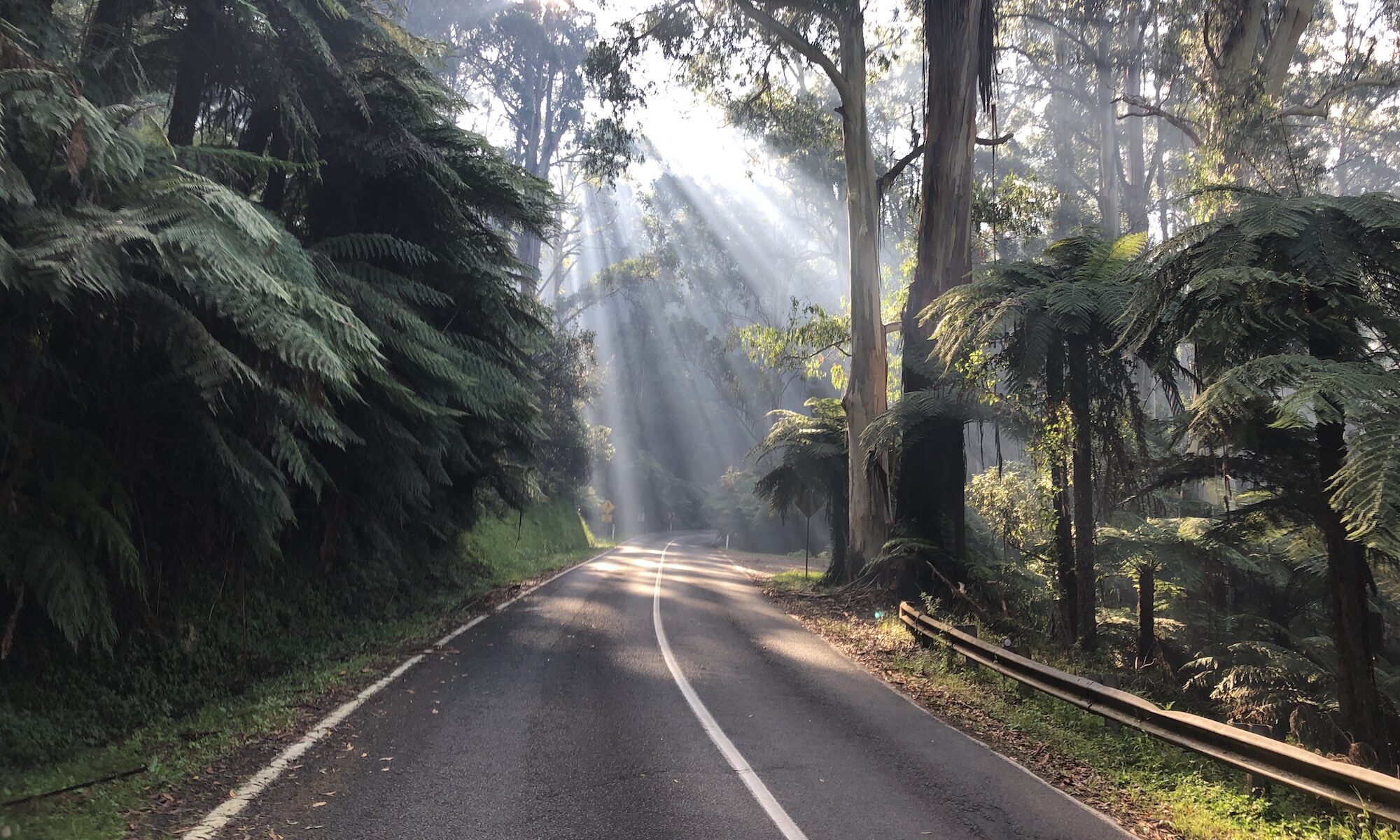
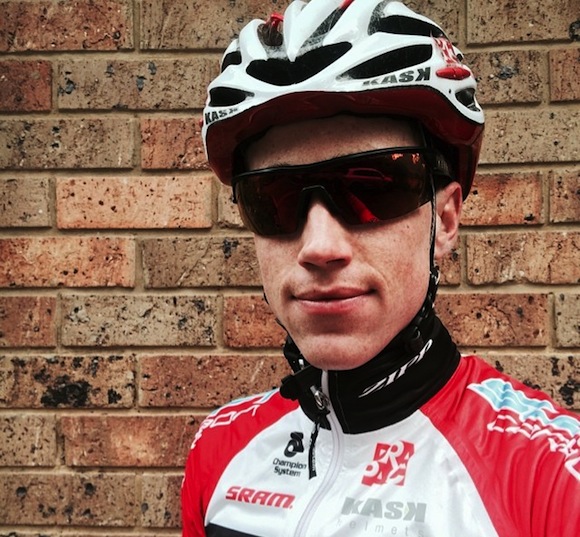
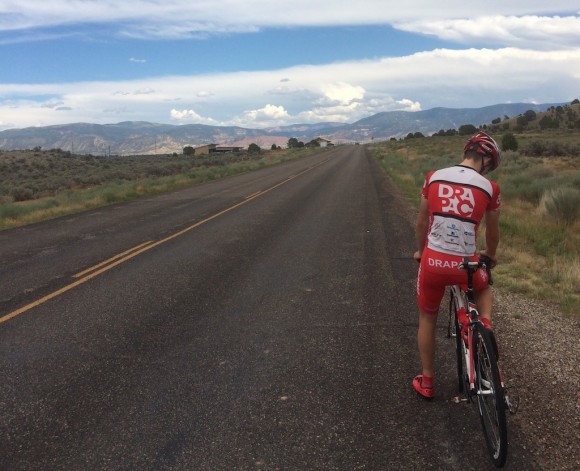
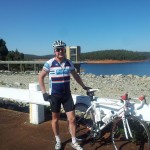
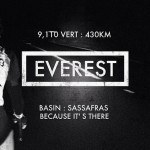
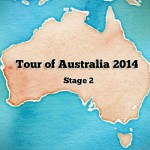
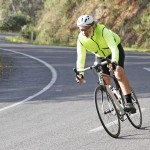
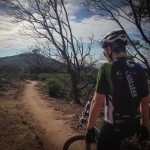
It’s just really fantastic to see that someone with real talent can progress at such a pace to this level and hopefully beyond without having to go thru the state and AIS “system” a la Richie Porte . We’ll done Brendan and to the NRS team managers that make this possible – thank you!
Yeah! It’s reassuring to know that my path to the world tour is all but secured now… 😀
I think you have to be very fortunate to be provided the opportunities that allow for quick progression. The managers from S2R have been fantastic and have wanted nothing more than to see rider development from within the team. I’m really looking forward to finishing the season with them!
Great article.
Freak.
Great interview and insight into the life of a fledging cyclist. Wishing the best for B Canty, representing the Victorian mountains.
Glad we could provide some insight! It was an incredible experience racing with DPC…
Great to follow you through the race, nice to have another dimension to race watching.
How does getting involved with anti-doping work once you step up to international races? Are there additional things needing to be registered for ( eg the Whereabouts system etc)?
My understanding is that when you sign with a ProConti team or higher you need to go into the Bio Passport program: http://cyclingtips.com.au/2014/01/behind-the-scenes-of-drapacs-big-step-up/
I suspect (and hopefully he can tell us) that Brendan wouldn’t have needed to sign up for the bio passport/whereabouts for just one race. But I could be wrong.
Yep, I didn’t need to register for the passport program and do my whereabouts… I did need to sign anti-doping declarations and other things, which we had to do in the NRS too.
Just FYI: the Anti-Doping control tested the podium winners of each stage and 3 other randomly selected riders per stage. A few of the Drapac riders were randomly selected during the tour…
How does that frequency compare to NRS levels of testing (assuming there’s any at NRS that is!). The references I can find don’t really mention frequency or process, just “All events are expected to provide adequate anti-doping testing facilities if required”.
i noticed Brendan on Strava a while back and it’s mildly relieving to see that some of these guys blitzing the KOMs are actually world class. phenomenal effort at Tour of Utah.
Strava is great, and is probably one of the key drivers in getting signed with S2R. It’s been a while since i’ve earned a new KOM and i’ve lost quite a few too! There’s a lot of strong riders around